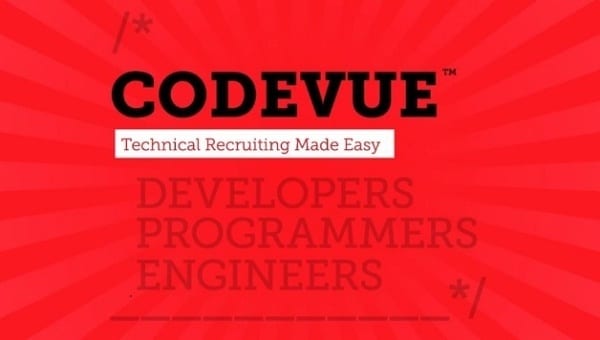Hiring Software Developers? Avoid This One Mistake

Disclaimer: the following tips on this article do not represent how HireVue interviews its candidates. These are just tips or leading practices that are followed by some of the leading technology firms. They’re just tips and ideas and the audience for this article are managers.
If you’re asking software developer candidates to code on a whiteboard, it’s time to stop. In fact, it’s time to throw the traditional developer interview out the window.
In many companies—perhaps in your company—technical recruiting goes off the rails before HR even posts the job ad. It starts with HR-composed job descriptions that demonstrate no understanding of what a developer actually does. Based on keyword-based job descriptions, HR wants candidates that know every programming language and can do at least 30 different jobs.
Elisabeth Greenbaum Kasson says it best: “Many employers’ ‘required’ skill sets seem to include everything but the ability to teleport and build a Shaker barn.”
Once a candidate passes the resume test and gets into the interview, the dreaded “code on a whiteboard” hazing begins. Like a frat hazing, it’s done because it’s what everyone else had to do to get accepted. Unfortunately, the candidate who interviews well and doesn’t crack under the whiteboard test isn’t necessarily the candidate you want as a developer. Also, it gives too much emphasis on an interviewer’s gut feeling about a hire instead of choosing candidates based on objective data.
Thomas Ptacek of Matasano Security recently wrote a blog post about how his experience hiring software developers. It’s a process that more companies, from Fortune 500s to startups, should implement when hiring developers.
Pre-Screen for Jerks
Let’s face it: Not every programmer has a warm and fuzzy personality. Many people who could be great developers aren’t going to ace the social graces. At the same time, you don’t want to add outright jerks to your team. Some type of early screening, like an on-demand digital interview, ensures that candidates can play nicely with others and filters out candidates with less potential.
Warm Up Potential Candidates
Ptacek’s team calls candidates who pass the phone screen and gives them an AMA-style chance to learn anything and everything about the job. The actual hiring director makes the calls, giving candidates access to someone influential right from the beginning.
During the conversation, the hiring director asks general questions and reviews the selection process in detail. Candidates always know what’s coming next and how they’re being evaluated.
Give the Ball Back to the Candidate
Someone who has great potential as a developer might not know exactly how to do what Matasano needs. Matasano invested in creating a study guide, which candidates receive along with a couple of free books.
The candidates are given a chance to learn what Matasano needs to have done, and they can proceed with a work sample test when they’re ready. Ptacek says that this investment in bringing candidates up to speed has helped Matasano snag some of its best hires.
Create a Meaningful Work Sample Test
Any work sample test should have three essential components:
- It should mirror actual on-the-job tasks.
- It should be standardized, which means every candidate for a position gets the same test.
- It should generate data and a grade based on a standardized rubric. Pass/fail isn’t sufficient because it doesn’t capture the nuances of each candidate’s performance.
Ptacek’s team has created multiple work samples to learn which scenarios provided them with the most meaningful data. The best samples collect data based on how well the developer achieves certain goals, which for Matasano included unit test coverage and algorithmic complexity, and also how well the developer performed certain tasks.
Candidates get as much unpaid time as they need to complete their work samples, and Matasano provides tech support throughout the process. Matasano doesn’t have a temp-to-hire 1099 system because of how negatively it affects the candidate experience.
Make a Data-Driven Decision
In many ways, Matasano’s hiring process mimics the way applications are developed. Candidates are developed and thoroughly tested before being deployed into production. Building the process around objective data eliminates interviewer bias. Nixing the whiteboard test makes candidates actually want to audition for Matasano.
Read Ptacek’s post in its entirety to think about what steps of Matasano’s process you could implement in your own technical hiring. You can also learn how companies like IBM Watson have built a world-class technical team by eliminating the whiteboard.

